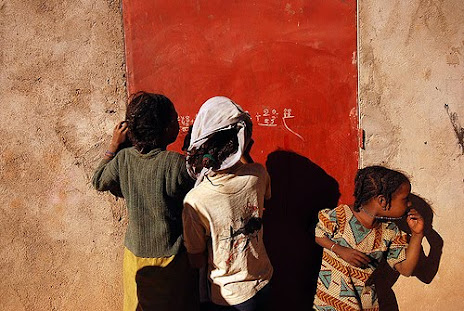I would like to begin by thanking everyone for participating in the discussion surrounding the issues I found in chapter 4, what a relief!
Amber Hill is a school with some critical issues in mathematics that need resolving. The teachers are caring, more than competent, "All the mathematics teachers were well qualified mathematics specialists", and efficient. Their effectiveness, however, is an entirely different matter. I do believe it would be wrong to say that 'no' mathematics learning took place at all ( and Boaler doesn't) but it must also be said that very little true mathematical knowledge or understanding happened.
To read about these classrooms is to recognize the forms of instruction, the ways students felt, the motivations behind teachers' actions. The old adage " people in glass houses shouldn't throw stones" comes to mind. It was heartening to read that "students did not blame their boredom on the intrinsic nature of mathematics" Still we sure have a long way to go folks! See you next Thursday!
Video Links Have Been Moved!
Thursday, October 8, 2009
Critical Reflections - chapters 1-3
I guess I was caught up in preparing for my presentation, I've just realized I hadn't posted a reflection on Chapters 1-3, mea culpa Luckily I'd made a few notes, here they are:
After reading Schoenfeld's introduction, it did in fact "induce me to read on",( of course the fact its required reading played a part too!) This being my first graduate level course I am unfamiliar with the rigors of research and what makes a reliable study, suffice it to say I was suitably impressed by Boaler's explanation of her study and have no doubts that her findings are accurate and founded in truth. I was struck but the inclusion (in both Schoenfeld's and Boaler's introductions) of gender as an issue. I must have been living with my head in the sand, I so thought that had been dealt with ( this was an issue yea those many years ago when I did my Bachelor's degree) . Upon reflection I wonder if it wasn't because I didn't see gender in math. In other words I don't expect the boys to do better than the girls, I just expect ( and find) that there are always a mixture of abilities in any classroom.
I was also struck by the idea of reality versus facade in education. When Boaler described Amber Hill, its Principal, its reception area, classroom/hallway behaviour, I started to get a picture of the school, as was her intention. This was then contrasted with what was happening at Amber Hill,( type of instruction, level of learning etc) and one quickly realized that 'you have bite into the chocolate to find out what flavor is on the inside'. I'm sure as we progress through the book Amber Hill will reveal itself to have some redeeming qualities. I look forward to the journey!
Postscript: Now that I've looked so closely at chapter 4 I realize that as Boaler states (p.47) "the portrayal of mathematics at Amber Hill is quite bleak" More about that in my next entry!
After reading Schoenfeld's introduction, it did in fact "induce me to read on",( of course the fact its required reading played a part too!) This being my first graduate level course I am unfamiliar with the rigors of research and what makes a reliable study, suffice it to say I was suitably impressed by Boaler's explanation of her study and have no doubts that her findings are accurate and founded in truth. I was struck but the inclusion (in both Schoenfeld's and Boaler's introductions) of gender as an issue. I must have been living with my head in the sand, I so thought that had been dealt with ( this was an issue yea those many years ago when I did my Bachelor's degree) . Upon reflection I wonder if it wasn't because I didn't see gender in math. In other words I don't expect the boys to do better than the girls, I just expect ( and find) that there are always a mixture of abilities in any classroom.
I was also struck by the idea of reality versus facade in education. When Boaler described Amber Hill, its Principal, its reception area, classroom/hallway behaviour, I started to get a picture of the school, as was her intention. This was then contrasted with what was happening at Amber Hill,( type of instruction, level of learning etc) and one quickly realized that 'you have bite into the chocolate to find out what flavor is on the inside'. I'm sure as we progress through the book Amber Hill will reveal itself to have some redeeming qualities. I look forward to the journey!
Postscript: Now that I've looked so closely at chapter 4 I realize that as Boaler states (p.47) "the portrayal of mathematics at Amber Hill is quite bleak" More about that in my next entry!
Subscribe to:
Comments (Atom)

